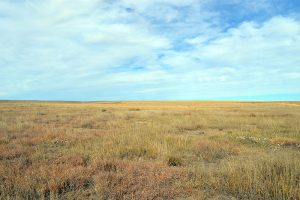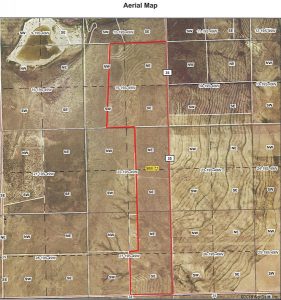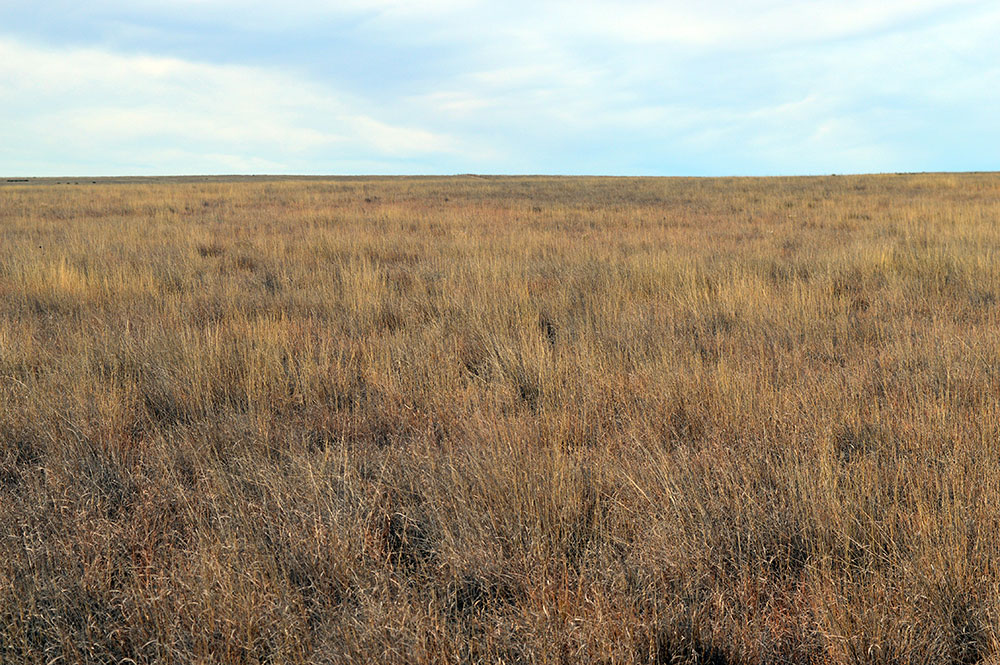Why Buy CRP Land in the Conservation Reserve Program?
Are you wondering why you would ever buy CRP land? Cruikshank Realty is offering two tracts of land that that are currently in the Conservation Reserve Program (CRP). So, let us talk about the CRP program, a brainchild of the USDA. Farmers may enroll their land into the CRP program for a certain number of years and received governmental payoff. During this term, the land is seeded with a variety of permanent grasses. 
Kiowa County CRP Land for Sale
The two individual tracts of Kiowa County CRP land for sale are near Eads, Colorado. (See location and directions below.) Tract #1 includes 449 CRP acres and Tract #2 consists of 540.5 CRP acres. The CRP contracts yield annual payments of $16,218 and $18,242, respectively. Both CRP contracts expire in 2022. List prices are $259,500 and $290,500; total $550,000. Available separately or as a unit.
Conservation Reserve Program
The CRP includes land suitable for some conservation practices. These areas normally include riparian, wildlife habitat, and wetland buffers. They also may be filter strips, suitable for wetland restoration, or they are grass waterways, shelterbelts, living snow fences, contour grass strips, and other types of property beneficial to wildlife.
Any cropland could be considered as part of the Conservation Reserve Program (CRP) if it has been farmed for four of the previous six crop years. It may be suitable as Continuous CRP land if it is marginal pastureland adjoining a stream, creek, river, sinks-hole, and/or duck nest.
Landowner CRP Benefits
Landowners receive contract payments for treating their acreage in specific ways. The CRP issues rental payments, cost-share assistance, and financial incentives. To qualify for rental payments, landowners must create long-term land cover on the property. There may be some cost-share assistance if the land cover is used for certain purposes. The FSA has offered additional incentives for field windbreaks, grass waterways, filter strips, and riparian buffers – and other services.
Environmental CRP Benefits
CRP acreage benefits the environment, soil, water quality, and wildlife. Native plants, animals and eco systems can be stabilized by adding simple filter strips. These separate an agricultural field and a stream, let’s say. The program also protects soil productivity by establishing conservation covers on at-risk land. This reduces erosion caused by sheet, rill, and wind. Water quality is improved because of the reduction in the erosion and minimalizing agricultural chemicals reaching the water sources.
The CRP program is beneficial for wildlife habitat. Bird populations have dramatically increased since the beginning of the Conservation Reserve Program.
History of Conservation Reserve Program
What is now the Conservation Reserve Program or CRP began developing in the 1950s. Back in 1956, the Agriculture Act carved out by the conservation branch of the Soil Bank Program sought to improve agriculture. Lands with the highest risk of erosion were removed from agricultural production. The land then was reseeded with native or alternative permanent vegetative cover. The government paid for land improvements if they improved the quality of soil, water, forestry, or wildlife. But the program was used infrequently. Then in the 1970s farmers began increasing total cultivation–fence row to fence row. This practice believed to be detrimental. 
Programs were established in the next decade to address the problem. Take the Farm Bill of 1985. This bill extended the contract periods from three years to 10-15 years. This bill also increased the allowable acreage. In Farm Bill of 1990, allowable acreage increased to 40 million acres. This version added all kinds of eligible lands, some not so highly erodible. There were more changes in 1996 and 2002. These dealt with riparian areas, wetlands and types of vegetative cover, etc.
In 2002, the cropping history requirements were changed to four out of the six previous years. Land expiring under contract in the program would automatically be considered for re-enrollment. The 2008 Farm Bill allowed alfalfa growth, management, and cost-share incentives for land with trees, windbreaks, shelterbelts, and wildlife corridors.
Kiowa County Colorado Real Estate
A rural area, Kiowa County (pop. 1400) is north of our real estate offices in Lamar, Colorado. Eads is the county seat and closest community to our CRP land for sale. Eads serves the surrounding farming and ranching community and a few creeks that drain into the Arkansas River. The county’s largest high school is in Eads. Other towns in Kiowa County include towner, Arlington, Brandon, Chivington, and Haswell.
Directions to CRP Land for Sale in Kiowa County
Starting in Eads, Colorado, take Highway 96 W. for 5 miles. Turn south on County Road 35 and continue 5.25 miles to the northeast property corner. The property’s southeast corner is at the intersection of County Roads 35 and 11.
Realtors – Colorado Land, Farms and Ranches
For expert guidance when inquiring to buy CRP land, please call Gene Cruikshank, Broker/President, Cruikshank Realty at (719) 336-7802.
Schedule an appointment or come by to visit. Cruikshank Realty is located at 20 S. Main Street, Lamar, CO 81052. Specializing in Farm and Ranch Real Estate Sales, Management, Auctions, and Exchanges.

